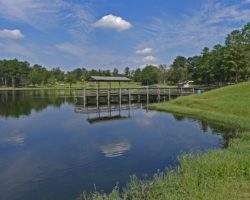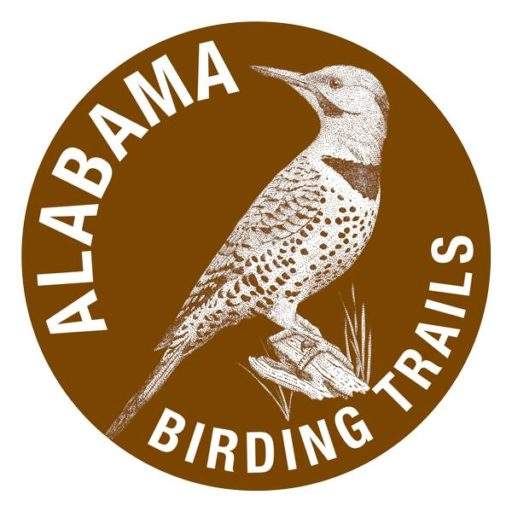Piney Woods, Western Loop | Washington | Best Seasons: Fall | Spring
Old St. Stephens Historical Park’s 600 acres contain a variety of habitats. Mixed loblolly pine and hardwood forest occurs on hills west of the old quarry and within the archaeological site. Park at the picnic pavilion and bird this upland habitat. Then descend toward the old quarry floor, but be sure to check the mature hardwoods around the Indian Baths on the way. When you reach the old quarry floor, park at the store. Eastern red cedar covers parts of the old quarry site and there are large areas of lawn around the store and camping facilities. Extensive marsh in the east and southwest parts of the old quarry, now lake and cypress swamp southwest of the old quarry will be of particular interest to birders.
Shore birds observed on the margins of the lake include Least Bitterns, Soras, Least and Spotted sandpipers, Greater Yellowlegs, and Killdeer. Ospreys, Mississippi Kites, and Red-shouldered Hawks are frequently observed around the quarry lake. Loggerhead Shrikes; Northern Parulas; Yellow-throated, Pine, Prothonotary, and Hooded warblers; American Redstarts, and Common Yellowthroats breed in the park. Spring and fall bring a wide variety of neotropical migrants and occasional flocks of American White Pelicans.
Ruby-crowned Kinglets and Chipping, Savannah, Song, Swamp, and White-throated sparrows are common winter residents.
The park is also home to the Gopher Tortoise.
Access: $2 for adults, $1 for children over 5, $8/night tent camping, $16/night RV
St. Stephens was the eastern most city of the Mississippi Territory and a very important site during the settlement of the southwestern frontier. During a brief three decades beginning in the 1790’s, St. Stephens became a Spanish Fort, an American trading post, and Mississippi territorial capital as settlers streamed down the Federal Road from the Carolinas and Georgia. At its height, c. 1820, the town boasted between two and three thousand residents and 450 substantial buildings. Upon Mississippi gaining statehood in 1817, Alabama became its own territory and St. Stephens its capital. Alabama’s first Governor, William Wyatt Bibb, presided over the first meeting of the Territorial Legislature at the Douglass Hotel on St. Stephens’ High Street. From here was the beginning of Alabama. St. Stephens declined rapidly to a ghost town after the capital was moved away in 1819.
GPS: N 31° 33.068’ / W 88° 03.058’ (Gate house), N 31° 33.573’ / W88° 02.072’ (Camp store)
Contact: St. Stephens State Historical Site
2056 Old St. Stephens Rd.
St. Stephens, AL 36569
Phone: 251-247-2622 (Camp Store)
Amenities: Restrooms, Handicap access, Potable water, Food (store), Parking, Camping (RV hook-ups), Canoeing (kayak rentals), Boat access (public boat ramp on Tombigbee River), Fishing, Picnic areas, Hiking trails, Horseback riding
From US Highway 43 at Leroy, go west on Washington County Road 34 for 6.2 miles, then right on St. Stephens Fork Road for 0.1 mile. Turn right on Cement Plant Road for 0.6 miles, then right on St. Stephens Park Road for 0.2 miles to the Old St. Stephens Historical Park gate house. Continue on St. Stephens Park Road for 1.1 miles; the entrance to the historical site is on the right and picnic pavilions and parking are immediately ahead.
Amenities Available:
Nearby Sites

J. Emmett Woods Public Fishing Lake
Much of the 84-acre Washington County Public Lake is surrounded by mixed second-growth forest with dense underbrush. Anhingas, wading birds, Ospreys, and Bald Eagles are regular visitors to the lake. Orchard Orioles, Purple Martins, and Barn Swallows …
